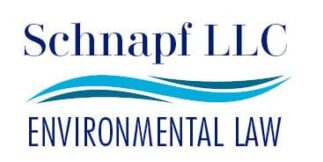In our prior Post, we discussed the regulations proposed by the Obama Administration since election day that would be subject to the moratorium issued by the Trump Administration. In this post, we cover the Obama-era regulations that have already gone into effect that my be vulnerable to recession under the Congressional Review Act (CRA). The CRA requires agencies to notify each house when regulations are issued. Congress has 60 “session” days from the date of the notification or after the rule is published in the Federal Register to issue a joint resolution of disapproval by a simple majority.
Once the disapproval resolution is signed by the president, the rule cannot go into effect or continue in effect. Once rescinded, the executive branch is prohibited from reissuing it “in substantially the same form” or crafting a new rule that is “substantially the same” unless Congress enacts legislation specifically authorizing it.
The Congressional Research Service (CRS) has estimated that the 60-day period for repealing regulations will apply to all federal rules adopted after May 30, 2016. Several conservative groups and the House Freedom Caucus have developed a “kill list” of environmental and energy-related regulations. Based on the CRS lookback date and the regulatory “kill list”, the following rules that the Obama Administration finalized in 2016 could be subject to a disapproval resolution under the CRA:
- Stream Protection Rule[1];
- Energy Conservation Program: Energy Conservation Standards for Residential Dishwashers; [2]
- National Pollutant Discharge Elimination System (NPDES) Municipal Separate Storm Sewer System General Permit Remand Rule;[3]
- Greenhouse Gas Reporting Rule: Leak Detection Methodology Revisions and Confidentiality Determinations for Petroleum and Natural Gas Systems[4];
- Hazardous Waste Export-Import Revisions[5];
- Management of Non-Federal Oil and Gas Rights;[6]
- Greenhouse Gas Emissions and Fuel Efficiency Standards for Medium- and Heavy-Duty Engines and Vehicles-Phase 2; [7]
- Review of the National Ambient Air Quality Standards for Lead;[8]
- Occupational Exposure to Respirable Crystalline Silica;[9]
- Finding That Greenhouse Gas Emissions from Aircraft Cause or Contribute to Air Pollution That May Reasonably Be Anticipated to Endanger Public Health and Welfare;[10]
- Standards of Performance for Municipal Solid Waste Landfills; [11]
- Emission Guidelines and Compliance Times for Municipal Solid Waste Landfills[12];
- Enforcement of Regional Standards for Central Air Conditioners; [13]
- Effluent Guidelines and Standards for the Oil and Gas Extraction Point Source Category;[14]
- Oil and Natural Gas Sector: Emission Standards for New, Reconstructed, and Modified Sources;[15]
- Source Determination for Certain Emission Units in the Oil and Natural Gas Sector for PSD and NNSR;[16]
- Energy Conservation Standards for Small, Large, and Very Large Air-Cooled Commercial Package Air Conditioning and Heating Equipment and Commercial Warm Air Furnaces.[17]
Disapproval resolutions may only be enacted as individual regulations. While the CRA provides an expedited legislative path for disapproval resolutions and prohibits the use filibusters in the Senate, each resolution is subject to up to ten hours of debate. Since Congress must pass a new budget, plans on repealing the Affordable Care Act and the Senate must complete confirmation hearings, it is unlikely there Congress could rescind more than a handful of regulations.
To address these constraints and enhance the use of the CRA, though, the House of Representatives recently passed the Midnight Rule Relief Act (H.R. 21) that would amend CRA to allow Congress to repeal groups of regulations en masse instead of one at a time. It is unclear if the Senate will approve this measure.
[1] 81 F.R. 93,066 (December, 20, 2016)
[2] 81 FR 90072 (December 13, 2016)
[3] 81 FR 89320 (December, 9, 2016)
[4] 81 FR 86490 (November 30 2016)
[5] 81 FR 85696 (November 28, 2016)
[6] 81 FR 79948 (November 14, 2016)
[7] 81 FR 73478 (October 25, 2016)
[8] 81 FR 71906 (October 18, 2016)
[9] 81 FR 60272 (September 1, 2016)
[10] 81 FR 54422 (August 15, 2016)
[11] 81 FR 59332 (August 29, 2016)
[12] 81 FR 59276 (August 29, 2016)
[13] 81 FR 45387 (July 14, 2016)
[14] 81 FR 41845 (June 28, 2016)
[15] 81 FR 35824 (June 3, 2016)
[16] 81 FR 35622 (June 2, 2016)
[17] 81 FR 32628 (May 24, 2016)
